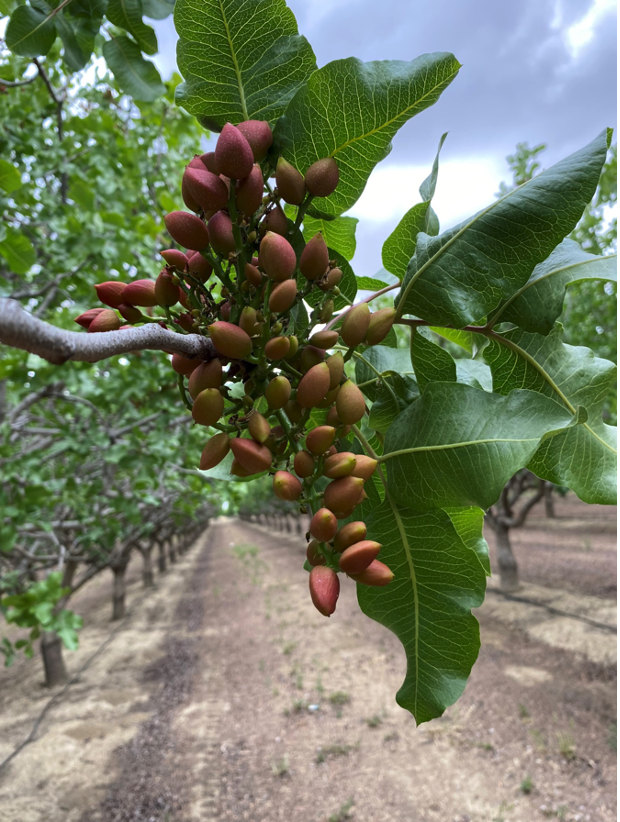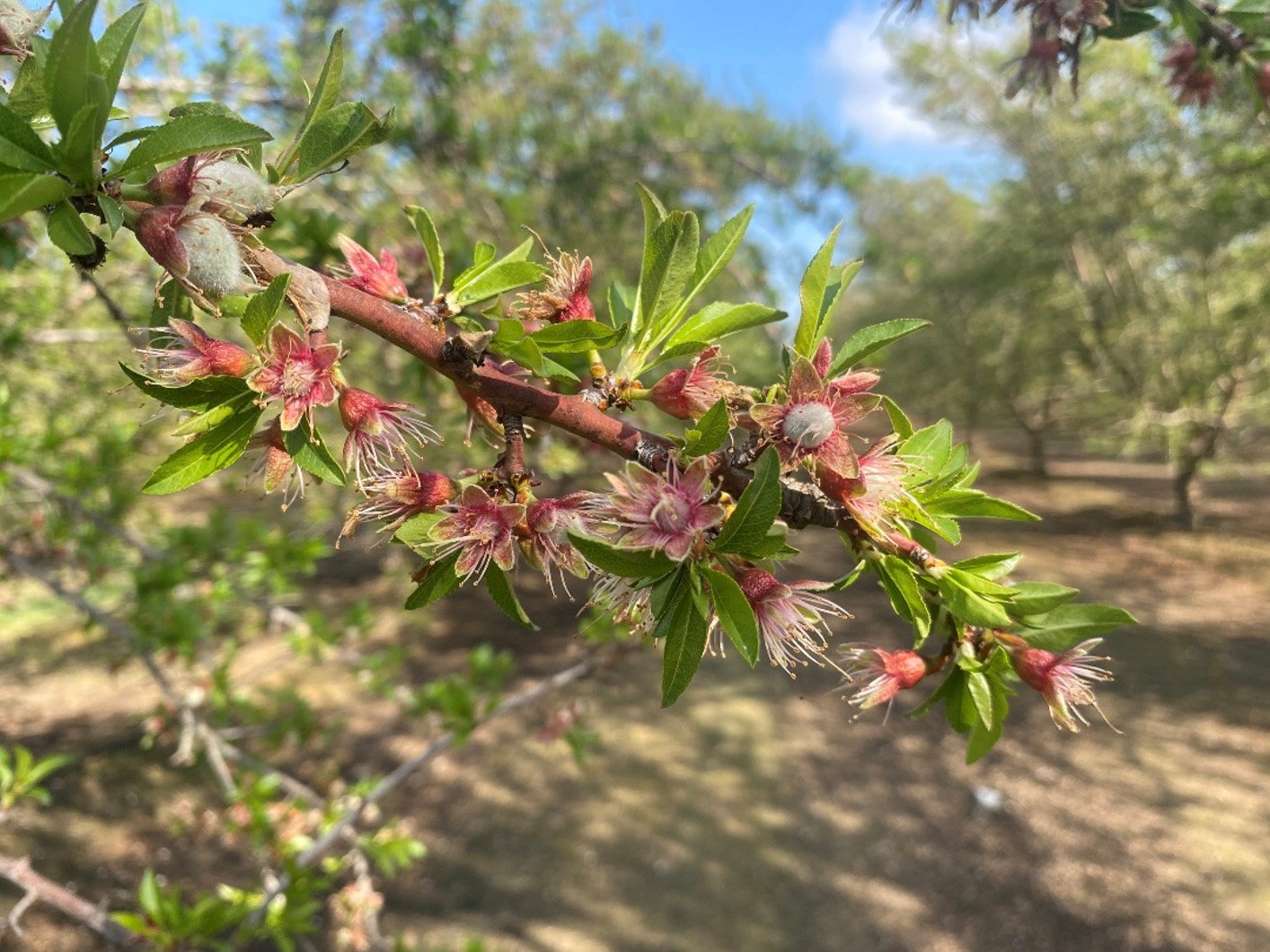By Travis Goldman, CCA, CAIS
One thing that we have lacked over the past two years is winter rains to help reset our soils. 2021 and 2022 irrigation management was quite tough because what problems we ended with the previous year lingered in our rootzone. In 2022 we faced both dry and salty soil conditions requiring most fields to run as much as 5” of water to refill deep moisture and leach salts. Unlike this winter, pre-season water in 2022 was applied to get soils to a tolerable EC. This year we still see regional problems with deep moisture and salt issues but on average we have seen a significant rest of our soils.
The West Side
Most of my pistachio consulting is done along the I-5 corridor or what I call my Mrs. Route; Manning, Russell & Shields Ave. The Diablos tend to produce a significant rain shadow for this area and most storms that promise 1” of precipitation can vary depending on where cells merge and dissipate. We all pray for rain to reset these salty soils because of poor well water quality, salty soils and whatever surface water a customer can afford tends to be impacted by salt by the time it reaches the booster. As an irrigation consulting we try to get our soils refilled and salt levels within a tolerable level before bud swell.
A tool that I frequently use for pistachios is a leaching fraction calculator provided by the UC Cooperative Extension. I use this calculator as a tool to assess the volumetric requirements in a pre-season irrigation to leach salts and lower the soil EC within a tolerable level . My customers are all very proactive and take water and soil samples in both the spring and fall. Using fall numbers I can calculate how much water is needed to lower my EC to a desired salinity of 3.

In high EC cases, such as the one above, we would need to apply 5.67” or 317.58 hours of water after saturation to get our salt level within a tolerable level. EC of rain water is significantly less than the salty well that is at an EC of 2.84. Since November 1st this West Side ranch has collected a total of 2.89” of rain and contributed to refilling the rootzone. Two tons of gypsum/ac were applied prior to the rain to offset the calcium deficiency. The combination of bulk gypsum and almost 3” of rain has significantly helped with rehydration. Additional water is not needed to refill the soil profile but is still expected to complete the necessary leaching fractions to lower the soil salinity.

During the 2022 growing season we had limited access to water resulting in extremely dry moisture conditions. Post-harvest a few short irrigations were made that did vertically percolate to 3’ below the button emitter; a preferential flow characteristic of this field. After water was pulled for the season we have recorded several precipitation events that have pushed water to 3’. The combination of bulk gypsum and clean rain water has had a substantial impact in percolation even with less than 3” of rain water.
The East Side
Pistachios along the Highway 99 corridor almost always see substantially more precipitation than those on the West Side. Just this year we have recorded a total of 10.37” of water since November 1st. These large rain events have done a number with flooding orchard isles and limiting access to fields with a vehicle. Soil and water samples are normally significantly cleaner and generally do not require leaching fractions but poor penetration from soil imbalances and compaction can lead to varying levels of moisture rehydration and deficits.
Using our leaching fraction calculator our desired salinity is below 3. EC of our well water is at 1.26 and our Soil Extract Analysis is below 3.0. Reviewing our meq of Calcium and Sodium we see equal parts. Having a deficiency in Calcium as well as a higher surface pH of 8.4 are the likely causes of why we are seeing varying levels of rehydration.


Analyzing our soil tension data we’ve seen the accumulation of over 10” of rain settle primarily within the top 12” with some percolation to 24”. Volumetrically this Traver fine sandy loam, strongly saline-alkali has an AWHC(RZ) of 3.79” but yet over 10” of water has not refilled this soil profile. We have tracked and saturated soils at 12” for days on end but yet little water has reached 3’. The number 1 rule of water is that water seeks the path of least resistance. In this case a soil imbalance is impeding infiltration and is causing water to pond. With recent storms bringing in well over 4” per system we have seen considerable amounts of standing water on the ends, lows and in some spots movement of water into the neighboring farm. Prior to bud swell we will need to run a calcium based product such as Diamond K to replenish calcium deficiencies and apply enough water through the drip to offset the moderate soil moisture deficit at 3 feet. Before applying water in February I would like to wait until all standing water is gone. Root respiration will be key and this deep moisture deficit will need to be fixed with more than just water.
February Irrigation Tips
- Irrigate to the holding capacity of your field.
- Shut water off if standing water begins to accumulate.
- Improve distribution uniformity before season starts
- Flush lines
- Fix damaged emitter and hoses
- Chemically treat hoses to break down biologics and minerals
- Test distribution uniformity.
- Quantify leaching fractions
- Record leaching hours using calculated points within the Hortau app.
- Keep track of your hours and volume of water applied.







